2) Mechanical definition of surface tension
Thus surface tension can manifest itself both in forms of surface energy as well as surface force.
(i) as an energy necessary to create surfaces
Work is needed to increase the surface area e.g. you perform 'work' when you beat egg whites into a meringue, or you make an emulsion of water in oil while preparing a mayonnaise.
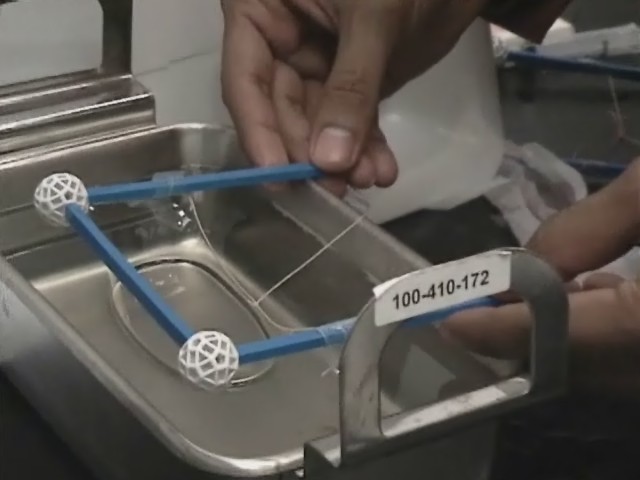 | 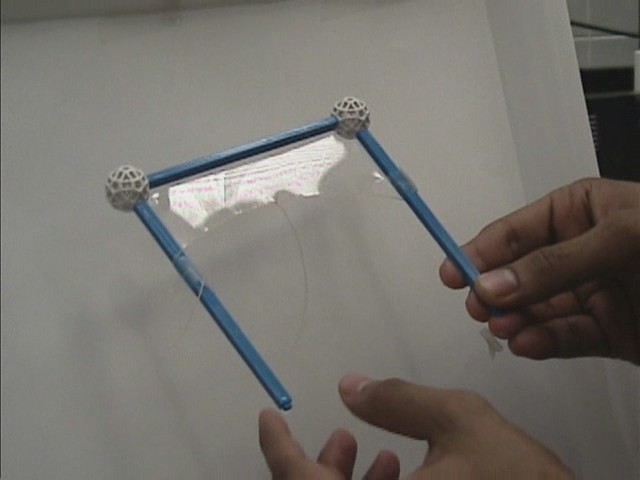 |
 | 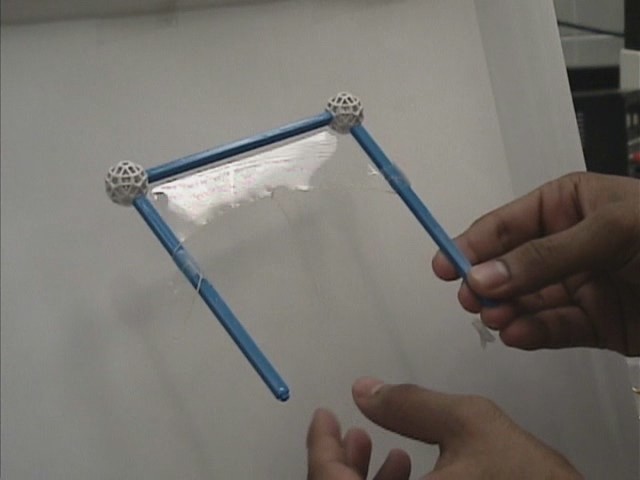 |
In the above demo, the work is being done by pulling the string down. This work is going into creating the additional surface area. The work required is proportional to the number of molecules that must be brought up to the surface, i.e. to dA (increase in area). Therefore, we can write:
dW = γdA
where γ is the surface (or interfacial ) tension. In other words, γ is the energy that must be supplied to increase the surface area by one unit. Units of mJ/m2
(ii) as a 'capillary force' per unit length
-Surface tension as a force normal to the line (wire,rod)
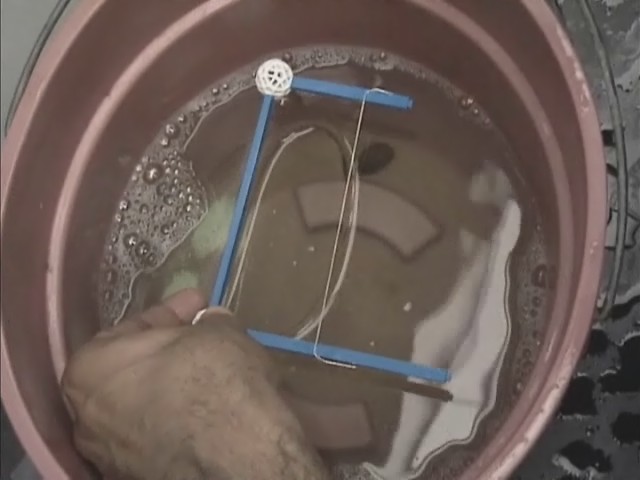 | 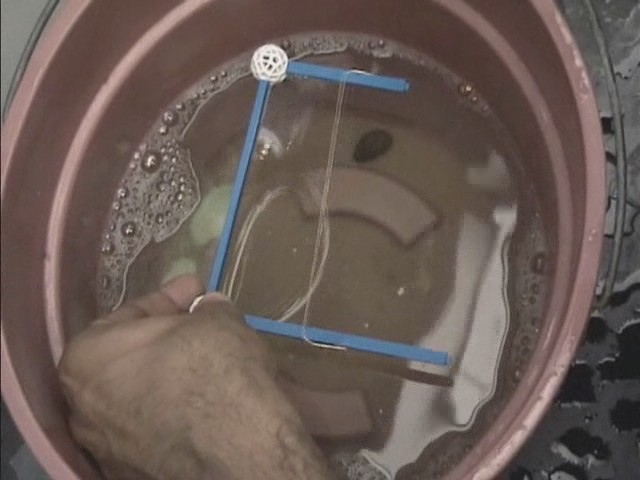 |
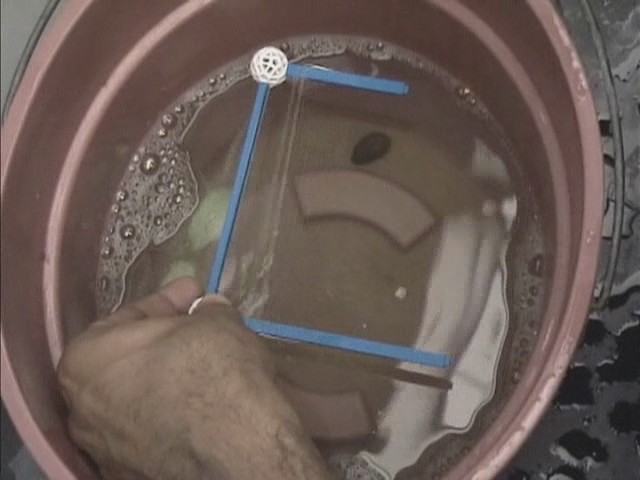 | 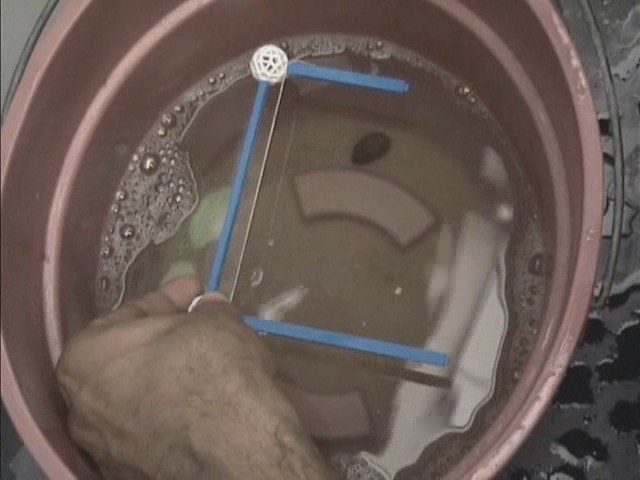 |
As soon as the apparatus is removed from the soap liquid, one observes that the mobile rod moves spontaneously in the direction of film, so as to decrease the surface area of the liquid. If the frame is tilted, it is even possible for the mobile rod to climb up the incline, only to fall back down suddenly the moment the liquid membrane is pierced. If the mobile rod moves by a distance dx, the work done is
dW = F.dx = 2γ.l.dx
where the factor of 2 reflects the presence of two interfaces. This demonstrates that γ is also the force exerted per unit length of the rod. (mN/m)
Daily life examples of capillary forces:
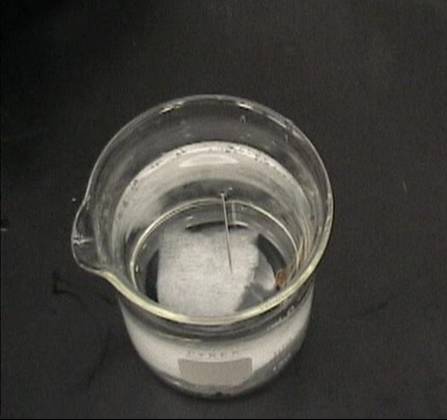

(A) Pin floating on water (B) Insect on the surface of water (http://home.att.net)
Capillary forces are truly remarkable in nature. They enable insects to walk on water. However, should the pond become polluted with detergents, which lower the surface tension, the unfortunate insects will drown! This phenomenon of flotation can be studied by depositing a needle/blade on the surface of water. The moment one adds few drops of detergent, the needle sink instantly.
For more information on objects (including insects ) on water, click here.
Sinking of a razor blade:
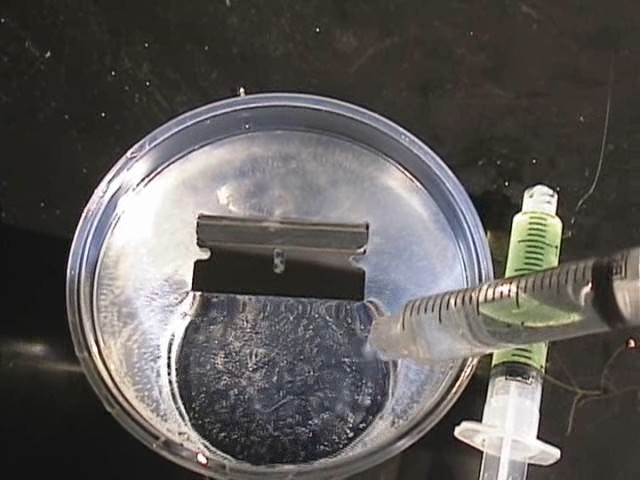 | 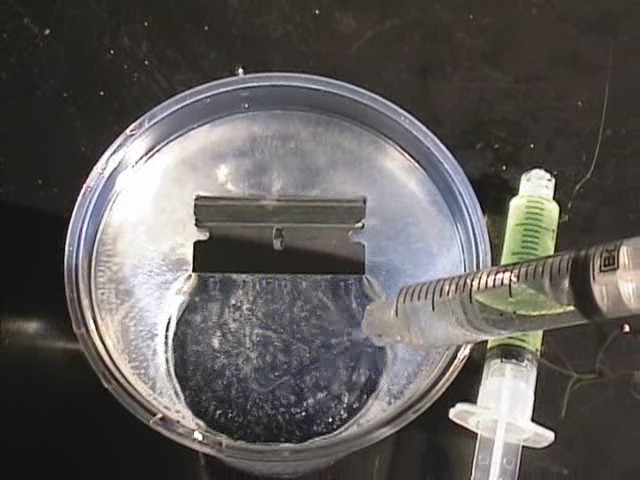 |
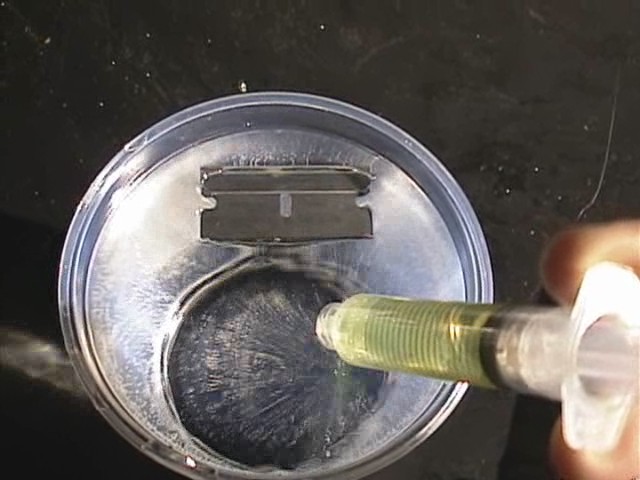 | 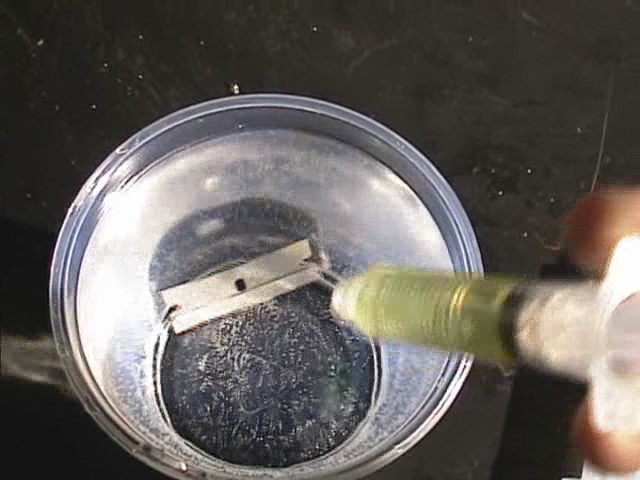 |
Blade swims in water as surface tension prevents it from sinking upon adding a few drops of liquid detergent to water, razor blade sinks immediately. The reason being the SURFace ACTive agENTS “surfactants” present in the washing liquid that strongly reduce the surface tension.
Capillary adhesion of two glass plates with a drop squeezed in-between
Two wetted surfaces can stick together with great strength if the liquid wets them with an angle < 90°.
From the above schematic diagram, we can see that the net resultant of the capillary forces on the plates will be a attraction force between the two plates which will cause the plates to stick together.
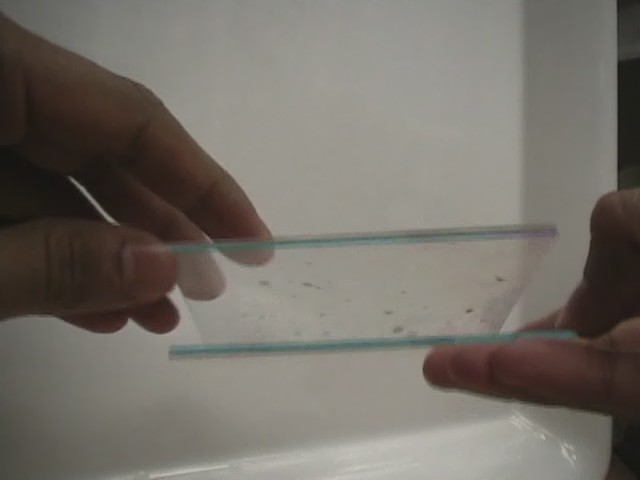 |
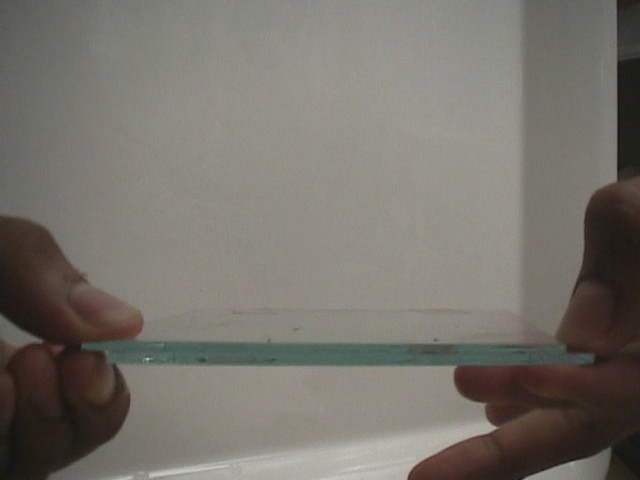 |
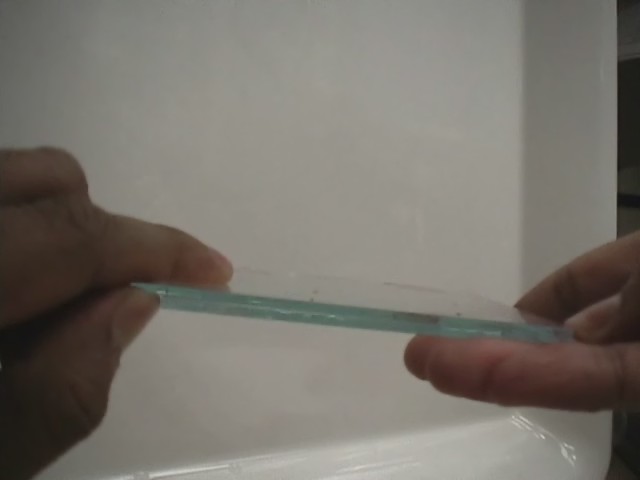 |
Back to index ||Introduction to surface tension ||Definition of surface tension||Interfacial tension ||Minimal surfaces ||Soap bubbles, Surfactants and Detergents
Wettability||Role of roughness ||Capillarity and gravity||Dynamical effects and instability||Special interfaces ||Current research in wettability
Back to NIRT Home||On our current research ||More on Wetting||Contact Angle Measurement||Atomic Force Microscopy ||My personal homepage